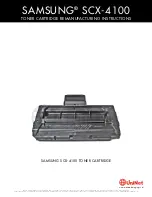
© ESAB AB2011
- 32 -
bg20e1
8
SAFETY
Users of ESAB welding equipment have the ultimate responsibility for ensuring that anyone who works on or near the equipment
observes all the relevant safety precautions. Safety precautions must meet the requirements that apply to this type of welding
equipment. The following recommendations should be observed in addition to the standard regulations that apply to the work
place.
All work must be carried out by trained personnel well-acquainted with the operation of the welding equipment. Incorrect oper
ation of the equipment may lead to hazardous situations which can result in injury to the operator and damage to the equipment.
1.
Anyone who uses the welding equipment must be familiar with:
S
its operation
S
location of emergency stops
S
its function
S
relevant safety precautions
S
welding
2.
The operator must ensure that:
S
no unauthorized person is stationed within the working area of the equipment when it is started up.
S
no-one is unprotected when the arc is struck
3.
The workplace must:
S
be suitable for the purpose
S
be free from drafts
4.
Personal safety equipment
S
Always wear recommended personal safety equipment, such as safety glasses, flame-proof clothing, safety gloves.
S
Do not wear loose-fitting items, such as scarves, bracelets, rings, etc., which could become trapped or cause burns.
5.
General precautions
S
Make sure the return cable is connected securely.
S
Work on high voltage equipment
may only be carried out by a qualified electrician.
S
Appropriate fire extinquishing equipment must be clearly marked and close at hand.
WARNING
Read and understand the instruction manual before installing or operating.
Arc welding and cutting can be injurious to yourself and others. Take precausions when welding and
cutting. Ask for your employer's safety practices which should be based on manufacturers' hazard
data.
ELECTRIC SHOCK - Can kill
S
Install and earth the unit in accordance with applicable standards.
S
Do not touch live electrical parts or electrodes with bare skin, wet gloves or wet clothing.
S
Insulate yourself from earth and the workpiece.
S
Ensure your working stance is safe.
FUMES AND GASES - Can be dangerous to health
S
Keep your head out of the fumes.
S
Use ventilation, extraction at the arc, or both, to take fumes and gases away from your breathing zone
and the general area.
ARC RAYS - Can injure eyes and burn skin.
S
Protect your eyes and body. Use the correct welding screen and filter lens and wear protective
clothing.
S
Protect bystanders with suitable screens or curtains.
FIRE HAZARD
S
Sparks (spatter) can cause fire. Make sure therefore that there are no inflammable materials nearby.
NOISE - Excessive noise can damage hearing
S
Protect your ears. Use earmuffs or other hearing protection.
S
Warn bystanders of the risk.
MALFUNCTION - Call for expert assistance in the event of malfunction.
PROTECT YOURSELF AND OTHERS!
GB
Summary of Contents for ET 17
Page 156: ... ESAB AB2011 156 bg20w1 ...
















































